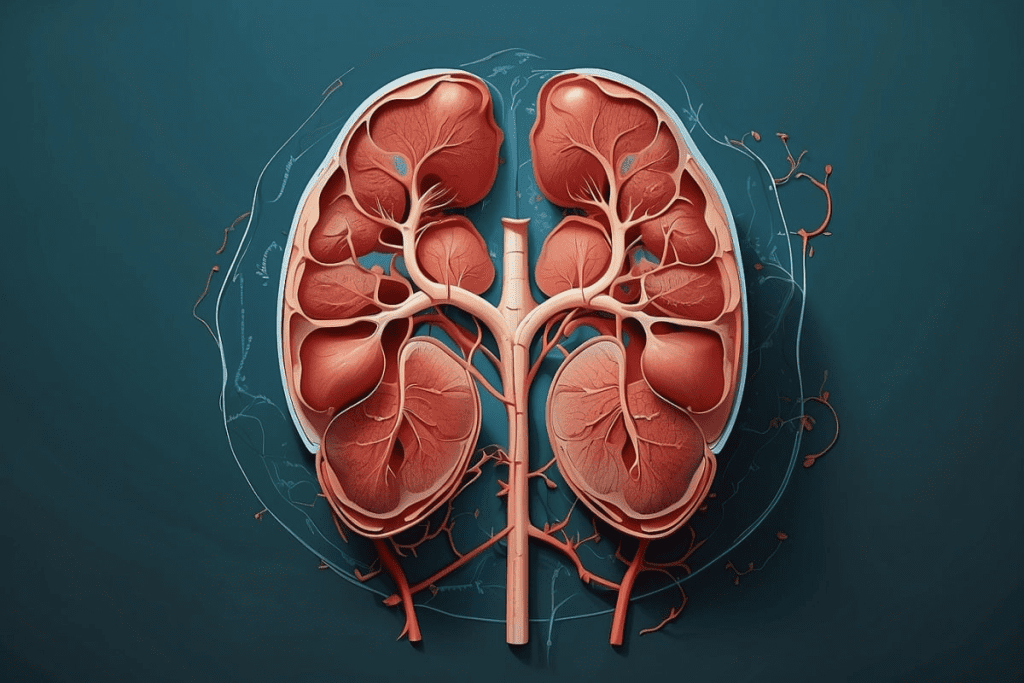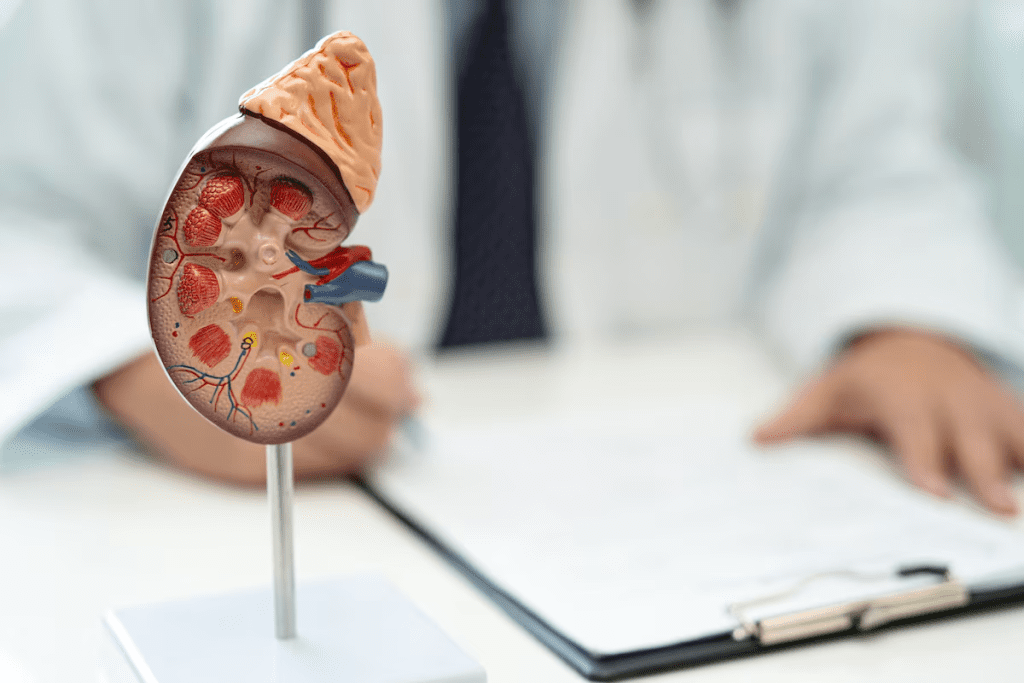Last Updated on November 25, 2025 by

CT urography is a test that shows the urinary tract. It uses ionizing radiation and intravenous contrast. This might worry people with kidney problems.
Even though CT urography is mostly safe, it’s important to think about the risks. We’ll look at the latest research and expert advice. This will help you understand if a CT urogram is safe for your kidneys.
CT urography is a cutting-edge imaging method that has changed how we diagnose urinary tract issues. It gives detailed pictures of the urinary system. This helps doctors find and treat problems more effectively.
CT urography, or CT urogram, is a CT scan focused on the urinary system. It uses a contrast agent to make the urinary tract stand out. This makes it easier to see any problems, like kidney stones or tumors.
Doctors often suggest CT urography for urinary tract symptoms. Some common reasons include:
CT urography helps find the cause of these symptoms. This way, doctors can create a treatment plan that fits the patient’s needs.
The CT urography process starts with a contrast agent. This agent is absorbed by the urinary tract, making it visible during the scan. The images show the entire urinary system, from the kidneys to the bladder.
Medical experts say CT urography is key to diagnosing urinary tract problems. It offers detailed and accurate images. This detail is vital for treating complex conditions.
CT with contrast is key in imaging the urinary tract. We use contrast media to see the urinary tract better. This helps us make more accurate diagnoses.
Contrast media are vital in CT urography. They make the urinary tract’s structures stand out. Contrast agents absorb X-rays, making them appear denser on CT images. This helps doctors see the urinary tract’s anatomy and spot problems.
“The use of contrast media in CT urography has revolutionized the field of uroradiology,” experts say.
“Contrast-enhanced CT urography provides comprehensive evaluation of the urinary tract, facilitating the detection of stones, tumors, and other pathologies.”
There are many contrast agents for CT urography, like iodinated contrast media. Iodine-based agents are the most common because they work well and are safe. They are divided into subclasses based on their osmolality.
The safety of most contrast agents is good. Most patients handle them well, with only a few having bad reactions. We carefully check each patient’s history and health to lower risks.
Knowing how contrast media work and their safety helps us understand CT urography’s benefits and risks. This knowledge helps us decide when to use contrast-enhanced CT scans for urinary tract problems.
When we talk about the safety of CT urography, we must look closely at contrast-induced nephropathy. This is kidney damage from contrast dyes in CT scans. Knowing about CIN helps us understand how safe CT urography is.
Contrast-induced nephropathy is kidney damage from contrast media in imaging tests. This can cause a drop in kidney function, leading to acute kidney injury (AKI). The reasons for CIN are complex, involving factors like kidney narrowing, direct harm to kidney cells, and oxidative stress.

There are several risk factors for CIN. These include:
People with these risk factors need careful evaluation and management. This is to lower the risk of CIN during CT urography or other imaging tests.
Recent studies have given us insights into CIN incidence rates. The risk has gone down with low-osmolar contrast media and better hydration. But the risk is still high in those at higher risk. A study found CIN rates vary from less than 1% in low-risk patients to over 20% in high-risk ones.
“The use of low-osmolar contrast agents and adherence to hydration protocols have significantly reduced the incidence of CIN, but vigilance is still required, especially in high-risk patients.”
” Expert Opinion in Radiology
It’s important for healthcare providers and patients to know these statistics. This helps make informed choices about CT urography, especially for those at higher risk.
To keep patients safe during CT urography, we use several strategies. This test is great for checking the urinary tract. But, it can be risky, especially for those with kidney problems.
Drinking lots of water before the test is key to avoiding kidney damage. Hydration protocols help spread out the contrast media. This makes it easier for the body to get rid of it, protecting the kidneys. We tell patients to drink water and sometimes give them IV fluids too.
New low-osmolar contrast agents make CT urography safer. These agents are less likely to harm the kidneys than older ones. We use the newest contrast media to keep our patients safe.

Screening patients well is important to find those at high risk for kidney damage. We use risk assessment tools to check kidney function and other factors. This helps us adjust the test to fit each patient’s needs, reducing risks.
For those at high risk, we look at alternative imaging options. Ultrasound or MRI urography might be suggested. We aim to find the right test for each patient, keeping their kidneys safe.
“The key to minimizing kidney risks during CT urography lies in careful patient selection, meticulous preparation, and the use of advanced contrast agents.”
Expert Opinion
By using these methods, we greatly lower the risks of CT urography. This makes sure our patients have a safe and effective test.
We’ve looked into the safety and effectiveness of CT urography. It’s a key tool for seeing the urinary tract and finding issues like kidney stones. A renal CT scan gives important details about the kidneys, helping spot many urinary tract problems.
Thinking about getting a CT scan for kidney stones? It’s important to think about the good it can do versus the possible downsides, like kidney damage from contrast. By carefully checking patients before the scan, making sure they drink water, and using new contrast agents, we can lower these risks.
So, what does a CT scan show? It gives a clear look at the urinary tract. This helps doctors make better choices for their patients. By knowing how CT urography works and taking steps to avoid risks, we can use it to help patients get better.
A CT Urogram, also known as CT Urography, is a test that uses CT scans to see the urinary tract. This includes the kidneys, ureters, and bladder. It’s great for finding kidney stones, tumors, and other issues.
A CT scan with contrast takes just a few minutes. But getting ready and getting the contrast takes about 30 minutes to an hour.
While they’re similar, a CT Urogram looks at the whole urinary tract. A CT scan for kidney stones focuses only on stones. Both use CT technology.
Contrast-Induced Nephropathy (CIN) is a risk with CT scans, including CT Urography. It’s when kidney function gets worse after contrast dye is used.
Risk factors for CIN include kidney disease, diabetes, dehydration, heart failure, and certain meds. People with these conditions need extra care before a CT scan with contrast.
Yes, for those at high risk, ultrasound or MRI might be better. The right imaging depends on the condition and the patient’s health.
To lower kidney risks, patients should drink lots of water before the scan. Use low-osmolar contrast and screen patients carefully. For high-risk patients, other imaging might be suggested.
The CPT code for a CT Urogram depends on the procedure details and location. For the latest codes, check the CPT guidelines or talk to a medical billing expert.
CT Urography uses CT scans and contrast media to see the urinary tract. The contrast goes through the kidneys, giving clear images of the tract.
Subscribe to our e-newsletter to stay informed about the latest innovations in the world of health and exclusive offers!